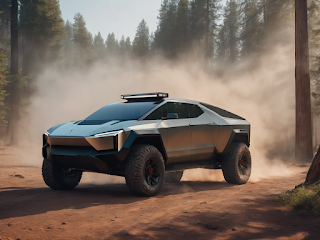The Clash of Titans: Tesla Cybertruck Crash Test Raises Safety Concerns
Automotive safety experts are raising alarms after the crash test results for the Tesla Cybertruck were revealed. Contrary to expectations, the heavy steel body of the vehicle might pose greater risks to passengers and pedestrians compared to traditional cars. In the crash test conducted by Tesla, the Cybertruck collided head-on with another vehicle at a speed of 35 miles per hour.
According to Jeffrey Brown, the Executive Director of the Institute for Road Safety Insurance Research, "The Cybertruck doesn't exhibit the same level of passenger protection as other contemporary vehicles. It also has the potential to cause significant harm to pedestrians."
A primary concern among experts is the absence of a hood cover on the Cybertruck, a component that typically helps prevent engine parts from entering the cabin during a collision. This lack of protection could lead to severe injuries for passengers.
The Cybertruck's Unique Design
Tesla's Cybertruck, known for its angular and robust design, has been a polarizing figure since its unveiling. However, the recent crash test results bring a new layer of scrutiny to its unconventional features.
The absence of a traditional hood, a key element for absorbing impact energy and protecting occupants, is a departure from standard safety designs. The Cybertruck's steel exoskeleton, while contributing to its distinctive appearance, may not offer the same crumple zone advantages as other modern vehicles.
Expert Insights
Jeffrey Brown emphasizes, "In traditional crash tests, the Cybertruck didn't perform as expected, raising doubts about its safety features. We need to consider innovative approaches to maintain safety standards in unconventional vehicle designs."
While Tesla has been a trailblazer in electric vehicles and autonomous technology, the safety of its vehicles remains a crucial aspect, especially as the company continues to push the boundaries of automotive design.
Safety Beyond Passengers
As the automotive industry moves toward a future of electric and autonomous vehicles, ensuring the safety of both occupants and bystanders becomes paramount. The Cybertruck's crash test results highlight the importance of reevaluating safety standards for evolving vehicle designs.
Future Implications
The implications of the Cybertruck crash test results extend beyond Tesla. The automotive industry, regulators, and safety organizations may need to adapt standards to accommodate emerging vehicle designs, fostering innovation while prioritizing safety.

